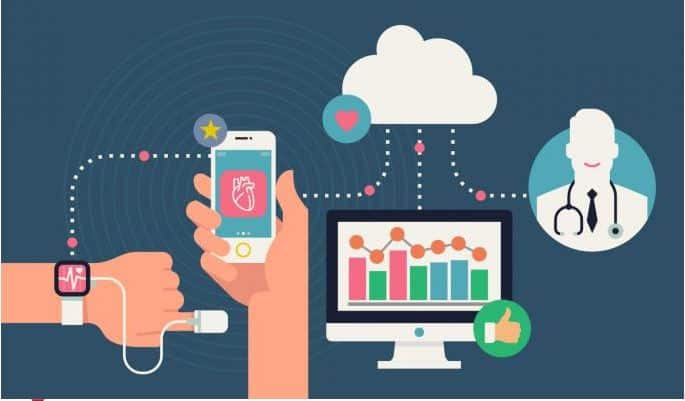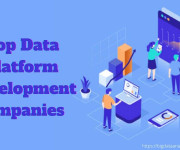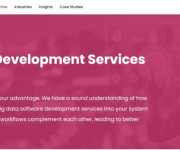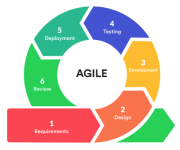How Patient-Generated Health Data (PGHD) Is Driving Innovation in Healthcare Analytics and Research
As healthcare rapidly shifts toward personalization and real-world insight, Patient-Generated Health Data (PGHD) approach has emerged as one of the most transformative sources of evidence. It bridges the gap between controlled clinical environments and the realities of daily life, giving pharma, researchers, and healthcare organizations a sharper, more holistic view of patient experiences.
Below, we explore how PGHD is reshaping analytics, enabling better decision-making, and accelerating meaningful, patient-centered innovations.
What Is Patient-Generated Health Data (PGHD)?
PGHD refers to health-related data created, recorded, or collected directly by patients outside of clinical settings. Unlike traditional clinical data captured during periodic health visits, PGHD offers continuous, real-world snapshots of patients’ daily health and behaviors. This complementary nature enriches the comprehensive understanding of patient health.
Common sources include:
- Wearables & biosensors (e.g., heart rate, sleep, step count, arrhythmia alerts)
- Mobile health apps (symptom tracking, medication adherence, mood logs)
- Connected devices (glucose monitors, inhalers, blood pressure cuffs)
- Patient communities & digital platforms (peer discussions, shared experiences, surveys)
What makes PGHD valuable is how it complements traditional clinical data—filling the gaps between appointments, capturing lifestyle factors, and revealing the nuances of disease progression at home.
The Value of PGHD in Healthcare Analytics
Harnessing PGHD unlocks insights that healthcare organizations simply cannot obtain through clinical trials or EMRs alone. When integrated into analytics platforms, PGHD helps teams understand:
1. Real-World Patient Behavior
Daily activity levels, medication habits, sleep cycles, diet patterns—these variables shape outcomes but often go unmeasured in clinical environments. PGHD brings them to light.
2. Disease Progression in Real Time
Instead of episodic snapshots from clinic visits, PGHD enables continuous data streams, improving the accuracy of predictive models and risk stratification.
3. Personalized Medicine & Tailored Interventions
Machine learning models trained on PGHD can identify patient subgroups, forecast flare-ups, and support recommendations adapted to individual behaviors and needs.
4. Better Understanding of Treatment Response
PGHD helps quantify how patients truly respond to therapies outside of trial conditions—informing both clinical and commercial strategies.
The incorporation of PGHD into healthcare analytics unlocks powerful insights into patient behaviors, treatment responses, and lifestyle factors that often remain invisible in clinical data alone. By analyzing continuous streams of information from patients’ everyday environments, healthcare providers and researchers can identify patterns, compliance issues, and early warning signs more effectively. These insights feed into predictive models that support personalized medicine, tailoring interventions to individual patient needs and improving outcomes. Moreover, PGHD facilitates a shift from episodic to proactive care by giving a real-time view of health trends.
Ultimately, PGHD strengthens data-driven decision-making by enriching datasets with high-frequency, high-context information.
Use Cases for Pharma and Research
Pharmaceutical companies and research institutions are increasingly leveraging PGHD across the entire product lifecycle—from discovery to post-market evaluation. Key applications include:
1. Designing More Relevant and Patient-Centric Studies
- PGHD helps researchers:
- Identify unmet needs and patient burden
- Select endpoints that matter most to patients
Improve study inclusivity and real-world applicability
This results in studies that reflect the realities of how people live with their conditions.
2. Evaluating Treatment Effectiveness in the Real World
PGHD offers a clearer picture of how patients use medications and how symptoms evolve day-to-day. This is especially useful for evaluating:
- Long-term adherence
- Functional outcomes
- Behavioral patterns that influence effectiveness
RWE teams increasingly rely on PGHD to sharpen post-market surveillance and comparative effectiveness analyses.
3. Strengthening Regulatory and Market Access Strategies
Regulators and payers are asking for more transparency around real-world patient outcomes. PGHD can help demonstrate:
- Quality-of-life improvements
- Functional benefits not captured in trials
- Patient-reported symptom reductions
- Real-world medication usage patterns
For market access teams, this data is crucial in crafting value narratives that resonate with decision-makers.
Pharmaceutical companies and researchers leverage PGHD in multiple transformative ways. In clinical trials, PGHD helps design studies that more accurately reflect real-world patient experiences and outcomes, enhancing relevance and patient recruitment. It enables dynamic monitoring of treatment effectiveness and safety beyond controlled settings, supporting adaptive trial designs. Furthermore, PGHD plays a critical role in regulatory submissions and market access strategies by providing robust real-world evidence that demonstrates the value of new therapies in everyday practice. This data helps build stronger patient-centric value propositions and informs post-market surveillance.
From Raw Data to Real-World Evidence
The real challenge—and opportunity—lies in transforming the massive volumes of raw PGHD into dependable insights. This requires:
- Robust data governance
- Advanced analytics and AI
- Patient-centric data architectures
- Integration with clinical and claims data
- Privacy-first design principles
When these capabilities come together, PGHD becomes a powerful engine for real-world evidence (RWE).
It enables organizations to see the full patient journey—beyond clinical encounters—to understand:
- What patients experience daily
- Why outcomes differ between individuals
- How lifestyle, environment, and adherence shape results
By centering data ecosystems around real patient needs, healthcare organizations can build smarter models, deliver more personalized care, and accelerate innovation across the healthcare continuum.
Ultimately, PGHD contributes to a more complete and nuanced understanding of the patient journey by capturing day-to-day experiences and health fluctuations that are missed by traditional data sources. When integrated into comprehensive data ecosystems alongside clinical and genomic data, PGHD facilitates holistic analytics and accelerates the generation of real-world evidence. This patient-centric ecosystem drives smarter decision-making, improved care pathways, and accelerated innovation across healthcare and pharmaceutical industries. In embracing PGHD, organizations unlock the potential to transform health outcomes by placing the patient at the center of data-driven insights.
Conclusion
Patient-Generated Health Data is no longer just an add-on to traditional evidence—it is becoming a foundation for the next generation of healthcare analytics. For pharma, research institutions, and healthcare organizations, PGHD offers a unique chance to understand patients deeply, evaluate therapies more accurately, and make faster, more informed decisions.
As the industry continues to embrace real-world evidence, PGHD will play an increasingly pivotal role in shaping strategies, improving outcomes, and creating healthcare systems that truly reflect how people live and heal.

























Leave a Reply